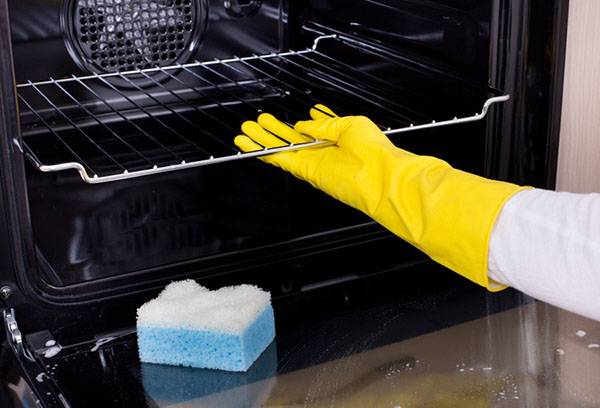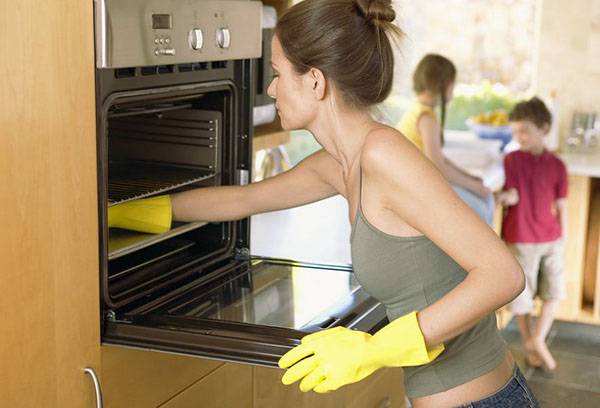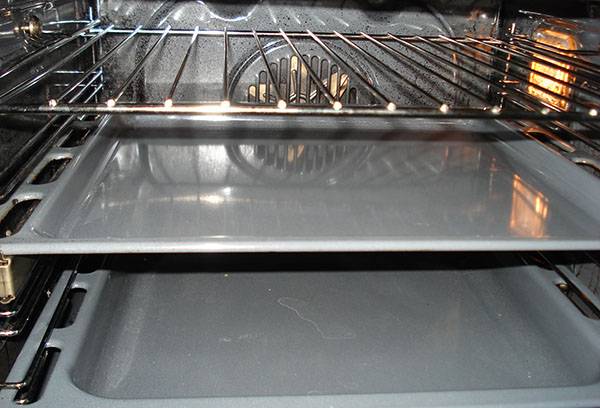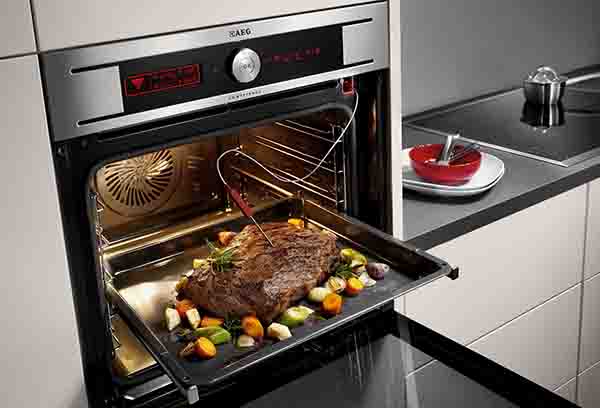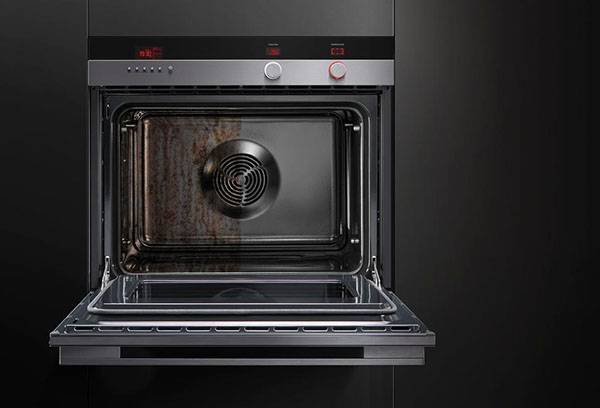What is catalytic oven cleaning and what are the advantages of the method?
Modern manufacturers have developed several new methods to help keep the stove in perfect condition. When choosing household appliances, it is important to know what a catalytic oven cleaning system is and how it differs from a pyrolytic one in order to purchase exactly the model that is best suited for use.
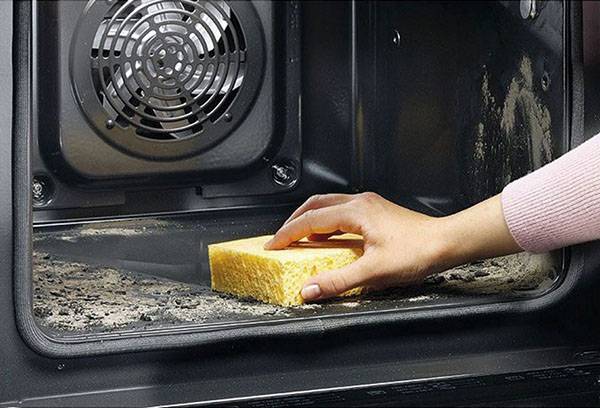
Cleaning options
Advanced technologies do not stand still, forcing stove developers to find new solutions that make oven care easier. Recently, models have appeared on sale in which the door can be removed. This greatly simplifies regular cleaning of the oven and makes it possible to treat the most difficult to reach places.
Many housewives appreciate the oven, which is equipped with a special trolley that allows you to easily pull out the work surface. If you use this function during frying, you can easily check the readiness of the dish. Cleaning is also simplified: the removed panel is washed separately from the stove.
Some ovens are coated with a special enamel that contains oxidation catalysts, which lead to the breakdown of fats when heated.
The pyrolytic cleaning function is considered the most expensive and high-quality, but it is installed only on electric stoves.
Catalytic method
This built-in self-cleaning function coats the inside of the oven with dark, rough enamel.If you look at it more closely, pores filled with a special chemical composition become noticeable.
When fat gets onto the oven walls during cooking, a reaction occurs under the influence of high temperature, and it quickly breaks down into water droplets and carbon.
Self-cleaning begins to work when the oven is heated above 150 degrees. The optimal temperature for quick cleansing is considered to be 250 degrees. The catalytic method helps keep the oven clean without the slightest effort on the part of the owner. After cooking, she only needs to walk along the inside of the oven with a damp cloth, collecting the ash that has formed as the fat breaks down.
To fully understand what catalytic oven cleaning means, you need to understand that with its help, walls coated with the composition absorb dirt like blotting paper.
Manufacturers producing such stoves do not apply porous enamel to the entire oven. She is situated:
- on the top, back and side walls;
- on the convector blades.
The lower wall is usually not treated with a special compound. This is due to the fact that porous enamel is damaged by sweet syrups and milk drips, which often fall down the oven when baking pies. Therefore, the lower part of the oven will have to be tidied up using cleaning products. This principle also applies to the door - you will also have to clean it yourself.
Advantages of the method
Since catalytic purification is a simple chemical reaction, it does not require complex technologies or expensive components. Therefore, such a system stands out among developments at an affordable price.In addition, it has a number of other advantages:
- significantly saves time spent on stove maintenance;
- the oven does not need to be washed after each cooking;
- cleaning occurs while cooking, so it does not require additionally turning on the oven and wasting electricity or gas;
- The warranty period for the enamel is about 5 years.
Over time, the protective coating wears off and must be replaced with a new one. In some models of equipment, the walls are treated with catalytic enamel on both sides. In this case, they need to be turned over to the new side. You can easily carry out the manipulation yourself, as the instructions describe the procedure in detail. But if a person is not able to cope with the work, the service center employees will quickly reinstall the walls.
When using catalytic cleaning, you do not need to select a special place in the kitchen to install the oven. The system works without interruption everywhere and does not heat the stove to such an extent as to damage furniture or other household appliances in the immediate vicinity.
Are there any disadvantages
Despite the positive reviews that the new development is receiving, it has several negative aspects. They must be taken into account when purchasing equipment.
- If, when frying meat, too much fat gets onto the porous enamel, the system does not always completely cope with its breakdown. Therefore, large dirty areas can only be cleaned after repeated use of the oven.
- Some pieces of equipment have to be washed the old fashioned way - by hand. This applies not only to the door and bottom wall, but also to the baking sheets, grill, and grate.
- When the walls of the equipment are not coated on both sides, purchasing new parts can hit the family budget hard. Their average cost depends on the brand of stove and ranges from 2000 to 4000 rubles.
Important!
Do not forget that the applied catalytic coating can be easily damaged and this will greatly reduce its service life. When cleaning soot, into which fat is converted, do not use cleaning powders, scrapers, or brushes. Only clean water and a soft sponge or cloth are allowed.
How to choose?
What does catalytic oven cleaning mean? This is a method whose effectiveness increases with regular use of the cabinet. Therefore, it is ideal for those who love to cook and constantly use the oven.
Every modern manufacturer of kitchen appliances has models with a built-in catalytic cleaning function. Its quality does not depend on the cost of the product, since porous enamel is made using the same technology and is purchased by slab manufacturers in finished form for processing the walls of products.
Electric and gas stove models are equipped with catalytic self-cleaning, but when purchasing, you should take into account that gas-powered ovens are less practical.
The principle of pyrolytic purification
The secret of the effectiveness of the method is that under the influence of high temperature, any dirt on the walls of the oven burns, turning into ash, which is simply removed with a rag. For the oven to clean completely, it needs to be at about 500 degrees.
The pyrolysis function must be specifically turned on. It doesn't work automatically.After pressing a special button, the oven doors lock and cannot be opened until the cleaning process is completed and the temperature inside the cabinet drops to 200 degrees.
During the procedure, a specific burning smell appears, so the developers equip the stoves with various filters that neutralize the unpleasant odor.
Important!
When purchasing equipment with this function, you need to install a powerful hood in the kitchen and connect the stove to the ventilation system through a special hole in the household appliance.
- Pyrolytic cleaning consumes a lot of energy. Its full cycle is two and a half hours, most of which is spent heating the walls to the desired temperature and cooling the oven.
- Such cleaning is installed only in expensive stove models. For safety reasons, all parts of the device must be made of high-strength materials that cannot be damaged by abnormally high temperatures.
- The outer parts of the plates are covered with enamel, which prevents excessive heating of the walls. This is necessary in order to prevent damage to nearby furniture and reduce the likelihood of a fire to zero.
- The door glass is made of several layers of fire-resistant material and is equipped with a special cooling function.
The advantages of pyrolysis are that such cleaning does not involve replacing the inner walls of the oven, as in the catalytic method. All contaminants, even smudges of sugar syrup or milk, are removed after a single treatment.
Disadvantages include manual cleaning of baking sheets and other removable parts, which are recommended to be removed from the cabinet before turning on pyrolysis. The main unpleasant point when buying such slabs is the high cost.
Having analyzed different methods of cleaning ovens and understanding what they are, we can say with confidence that catalytic cleaning is the best budget option, suitable for the daily destruction of contaminants during the cooking process.
